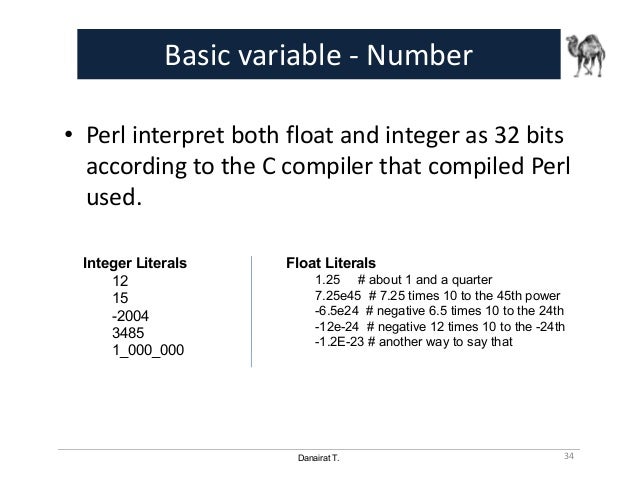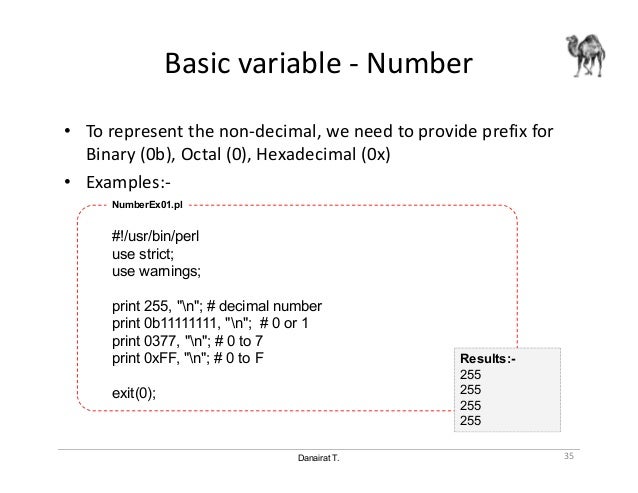

Not knowing the Perl has different operators for numeric tests and string tests can be a big “gotcha” when programming in Perl (so I wanted to make sure I noted this here). PCREs syntax is much more powerful and flexible than either of the POSIX regular expressionflavors (BRE, ERE)4and than that of many other regular-expression libraries. While I’m in the neighborhood of Perl and equality/comparison tests, here’s a list of Perl’s numeric and string comparison/equality operators: Young people maybe dont know this because there is not the correct knowledge of Perl and appropriate interest to Perl. Are you surprised to hear that Perl has syntax checking This means Perl is not interpreter language line by line.

Perl’s numeric and string comparison operators Perl can check the syntax using '-c' option.
#PERL SYNTAX CODE#
Here’s some example code that show this syntax: The Perl “else if” syntax actually uses the elsif keyword. The Perl if/ else syntax is standard, I don’t have any problems here: (I wrote this because after working with many different languages I can never remember the “else if” syntax for most languages, and elsif is pretty rare.) The Perl if/else syntax Here are some examples of the Perl if/else syntax, including the “else if” syntax, which is really elsif. Thisīehaviour is the same as a "while" loop conditional.Summary: This tutorial shows a collection of Perl if, else, and else if examples. If ($a) Using "readline" (or the operator form, "") as the conditional of a "for" loop is shorthand for the following. A few operators such as & have special evaluation rules that can result in an operand not being evaluated at all in general, the top-level operator in an expression has control of operand evaluation. If you enable warnings, you'll be notified of an uninitialized value whenever you treat "undef" as a string or a number. In fact Perl has a general rule that the operands of an operator are evaluated in left-to-right order. Treated as 0 when used as a string, it is treated as the empty string, "" and when used as a reference that isn't being assigned to, it is ( "undef") until it has been assigned a defined value, which is anything other than "undef". To create a function in the PL/Perl language, use the standard CREATE FUNCTION syntax: CREATE FUNCTION funcname (argument-types). Often work the same, but see perltrap for information about how they differ.ĭeclarations The only things you need to declare in Perl are report formats and subroutines (and sometimes not even subroutines). So if you have programmed in another language you will see familiar pieces in Perl. Syntax from Perl, particularly its regular expression extensions. Perl borrows syntax and concepts from many languages: awk, sed, C, Bourne Shell, Smalltalk, Lisp and even English. It allows programmers to be lazy and to code in a style with which they are comfortable. Perl performs 20/2 and 52 first, therefore you will get 10 + 10 10 10. This is known as Do What I Mean, abbreviatedĭWIM.


Split (Split function is used to split a string.) Split (Split function is used to split a string into substring) /pattern/ (Pattern is used to split string into substring. You can often leave such explicit elements off and Perl will figure out what you meant. Here we discuss the syntax and parameters: Syntax: Below is the syntax of split function in perl are as follows. Rather than requiring you to put parentheses around every function call and declare every variable, The Perl language includes a specialized syntax for writing regular expressions (RE, or regexes), and the interpreter contains an engine for matching. Many of Perl's syntactic elements are optional. is why we use the Nice::Try module instead, as it has a similar syntax to Error. Python where it is an important part of the syntax. The try and catch block of code is used for error handling in Perl. Whitespace mostly serves to separate tokens, unlike languages like Perl is a free-form language, you can format and indent it however you like. Loops, subroutines and other control structuresĪllow you to jump around within the code. In this tutorial, we will learn few important points regarding Perl syntax and naming convention. A Perl program consists of a sequence of declarations and statements which run from the top to the bottom.


 0 kommentar(er)
0 kommentar(er)
